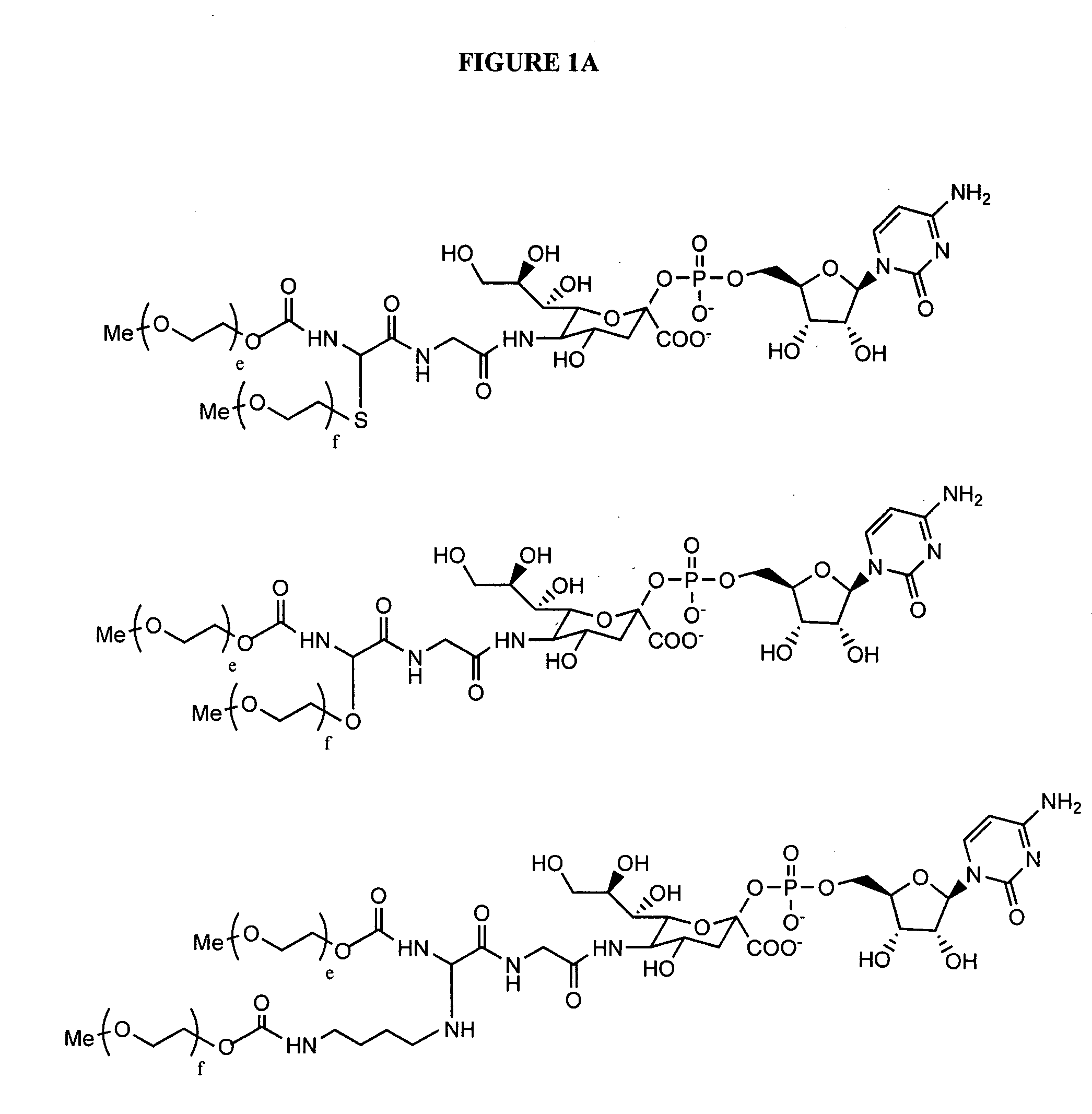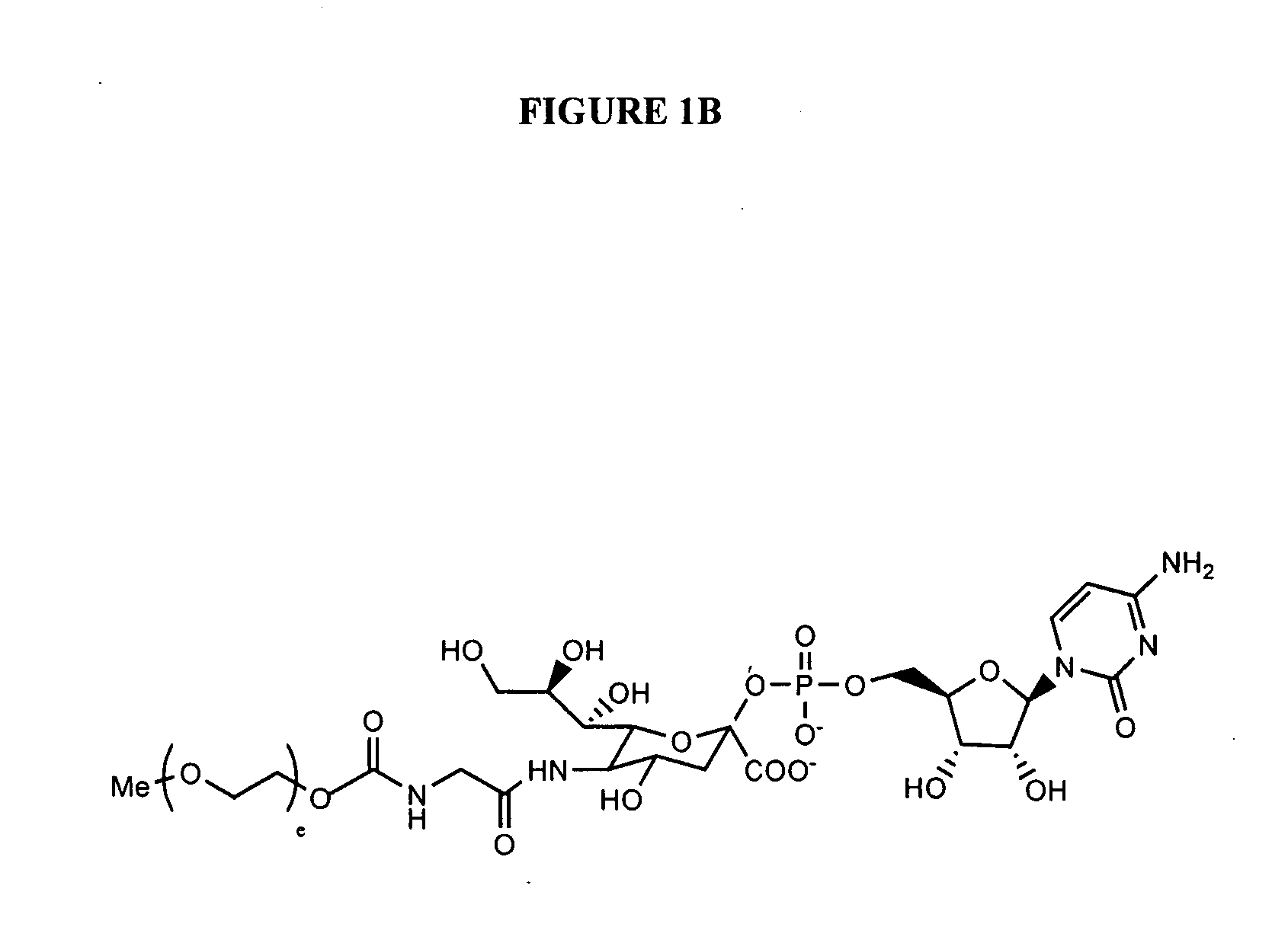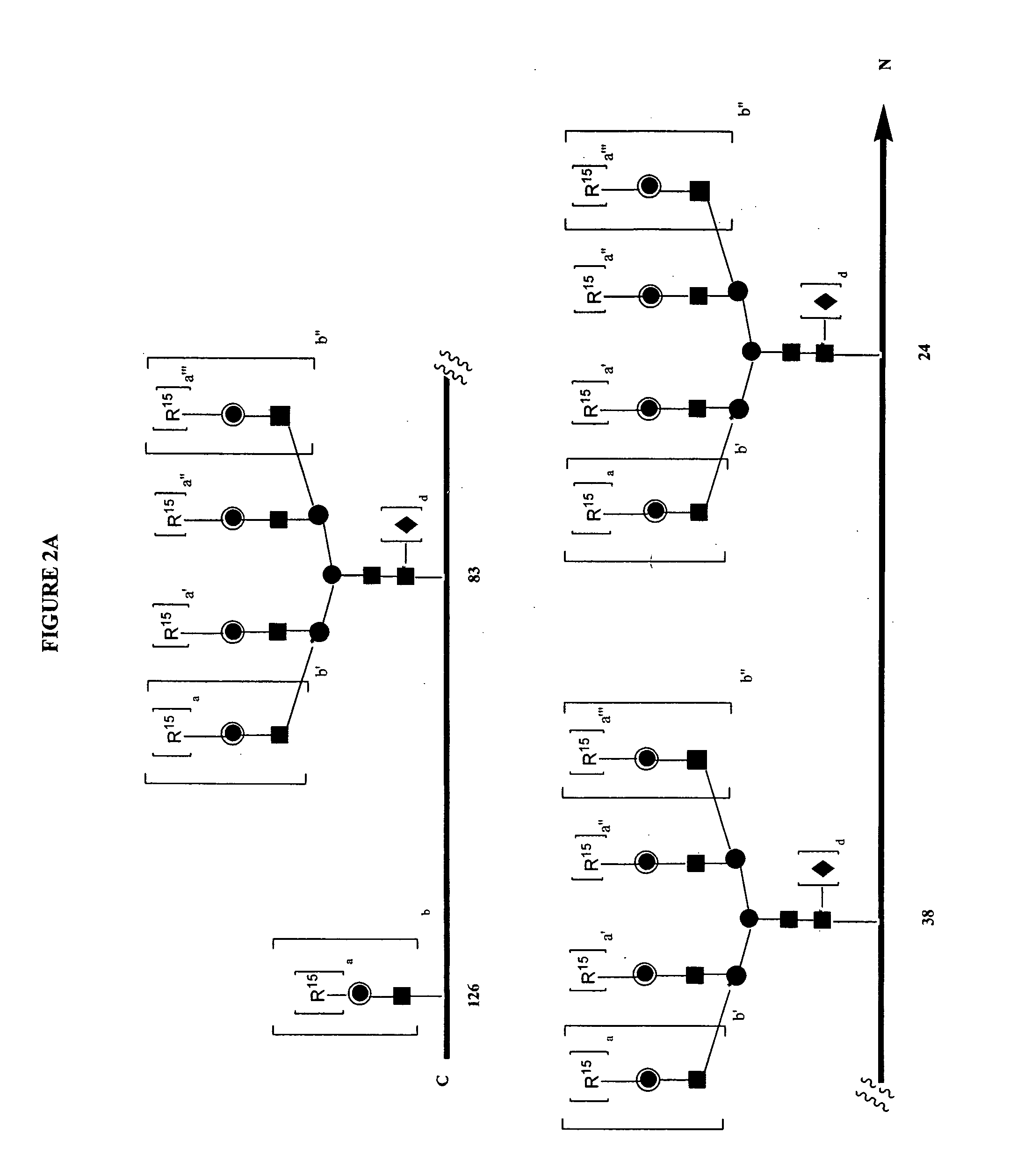Glycopegylated erythropoietin
a technology of erythropoietin and erythropoietin, which is applied in the direction of drug compositions, peptide/protein ingredients, extracellular fluid disorder, etc., can solve the problems of high health care costs than might be necessary, hammer the use of therapeutic peptides, and short in vivo half life of these peptides, etc., to achieve cost-effectiveness and improve pharmacokinetic properties
- Summary
- Abstract
- Description
- Claims
- Application Information
AI Technical Summary
Benefits of technology
Problems solved by technology
Method used
Image
Examples
example 1
[0330] Preparation of Cysteine-PEG2 (2)
1.1 Synthesis of Compound 1
[0331] Potassium hydroxide (84.2 mg, 1.5 mmol, as a powder) was added to a solution of L-cysteine (93.7 mg, 0.75 mmol) in anhydrous methanol (20 L) under argon. The mixture was stirred at room temperature for 30 min, and then mPEG-O-tosylate of molecular mass 20 kilodalton (Ts; 1.0 g, 0.05 mmol) was added in several portions over 2 h. The mixture was stirred at room temperature for 5 days, and concentrated by rotary evaporation. The residue was diluted with water (30 mL), and stirred at room temperature for 2 h to destroy any excess 20 kilodalton mPEG-O-tosylate. The solution was then neutralized with acetic acid, the pH adjusted to pH 5.0 and loaded onto a reversed phase chromatography (C-18 silica) column. The column was eluted with a gradient of methanol / water (the product elutes at about 70% methanol), product elution monitored by evaporative light scattering, and the appropriate fractions collected and dilute...
example 2
[0333] The following examples detail methods of modifying an EPO peptide that is expressed in insect cells.
GnT1 and GalT1 Reaction in One Pot
2.1 Reaction in One Pot
[0334] The one pot GlcNAc transferase-1 and galactose transferase-1 reaction was carried out by incubating insect-derived EPO (1 mg / mL) in 100 mM Tris HCl pH 7.5 or MES pH 6.5 containing 150 mM NaCl, 5 mM UDP-GlcNAc, 5 mM UDP-Gal, 5 mM MnCl2, 0.02% sodium azide, 30 mU / mL of purified GlcNAc transferase-1 and 200 mU / mL of purified galactose transferase-1 at 32° C. for 16 h.
2.2 Purification of EPO on Superdex75
[0335] A Superdex 75 column was equilibrated in 100 mM MES buffer pH 6.5 containing 150 mM NaCl at a flow rate of 5 mL / min. The EPO product from step 2.1 (above) was loaded on to the column and eluted with the equilibration buffer. The eluate was monitored for absorbance at 280 nm and conductivity. SDS-PAGE was used to determine which pooled peak fractions contains the EPO and used in further experiments.
2.3 ...
example 3
GnT1, GalT1 and ST3Gal-III (Using CMP-NAN-20KPEG) Reaction in One Pot
[0337] EPO (1 mg / mL), expressed in insect cells, was incubated with 30 mU / mL of GlcNAc transferase-1, 200 mU / mL of galactose transferase-1 and 500 mU / mL of ST3GalIII with sugar nucleotides and CMP-N-acetyl-neuraminic acid-20 Kd PEG in 100 mM MES buffer pH 6.5 and analyzed using SDS-PAGE. Similar to the results obtained in the two-step enzyme remodeling reactions, three bands of PEGylated EPO are seen in the one-pot, three enzyme preparations.
PUM
| Property | Measurement | Unit |
|---|---|---|
| molecular weight | aaaaa | aaaaa |
| molecular weight | aaaaa | aaaaa |
| effective radius | aaaaa | aaaaa |
Abstract
Description
Claims
Application Information
 Login to View More
Login to View More - R&D
- Intellectual Property
- Life Sciences
- Materials
- Tech Scout
- Unparalleled Data Quality
- Higher Quality Content
- 60% Fewer Hallucinations
Browse by: Latest US Patents, China's latest patents, Technical Efficacy Thesaurus, Application Domain, Technology Topic, Popular Technical Reports.
© 2025 PatSnap. All rights reserved.Legal|Privacy policy|Modern Slavery Act Transparency Statement|Sitemap|About US| Contact US: help@patsnap.com



